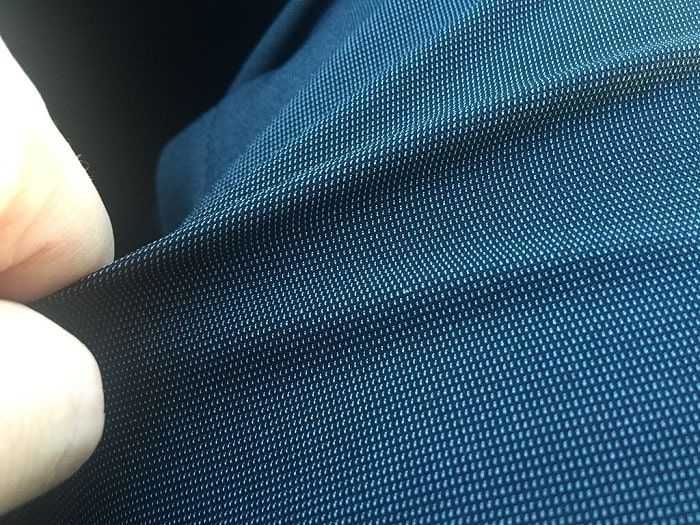Global polyester fiber market share and scopes for Bangladesh

In the total fiber consumption market the polyester share was 52% compare to other natural and chemical fiber where cotton share was 24.2% in 2020, according to the latest data of statista. Out of the total consumption of 52 % polyester fibre Spun Polyester Share is 18% and Filament Polyester share is 34 %. The data depicts that Filament Polyester fibre share is more than Cotton share in Global Fiber Consumption.
Interestingly, in Bangladesh there are around 400 cotton spinning mills whereas numbers of filament spinning mills are only 5. So, we can say that another 100 mills of polyester filament can easily survive in Bangladesh, once it meets the quality and price of the international market. At present, Bangladesh imports more than 10 million tons of polyester per year from China, Thailand, Indonesia and India.
POY: It is also known as Polyester Partially-Oriented Yarn. It is the first form of yarnmade directly from PTA & MEG or by spinning Polyester PET Chips/Flakes. POY is mainly used in texturizing to make textured yarn, also known as Polyester Drawn Textured Yarn (DTY).
DTY: Draw textured yarn(DTY) is made from Partially Oriented Yarn (POY). When the POY is drawn and twisted at the same time, the end product obtained is a draw textured yarn. The technical specifications of draw textured yarn have made it ideal for a wide range of applications as it can be molded in several ways as well.
ACY: Air covered yarnis manufactured by interlacing Spandex yarn with Nylon/Polyester by the help of compressed air. Spandex is then applied during a draw texturizing process of Polyester or Nylon to avoid the additional process of spandex application.
FDY: Fully Drawn Yarn(FDY) is produced by a process similar to POY manufacturing except that the yarn is produced at higher spinning speeds coupled with intermediate drawing integrated in the process itself. This allows stabilization through orientation and crystallization.
Denier: Denieris a unit of measurement used to determine the fiber thickness of individual threads or filaments used in the creation of textiles and fabrics. Fabrics with a high denier count tend to be thick, sturdy, and durable.
What is melt spinning?
Top of Form
Melt spinning is a manufacturing process used to produce polymeric or synthetic fibers. It utilizes a rapid cooling system to transform melted base materials into long strands, filaments. Melt spinning is commonly used to produce fibers such as Nylon, Polyester and Acrylic.
In a typical melt spinning application, the manufacturing process is performed on a large spinning tower. A drum of melted polymers sits at the top of the tower, with a pump and filtering system situated below. The pump directs melted Polymer down through a metal die (Spinneret) This die contains a large number of microscopic holes that help to form the molten polymer into thin strands.
As these filaments exit the spinneret, they immediately pass in front of a cold air blower, which rapidly cool and solidify the strands. From here they travel down to a series of rollers, which wind or spins the strands into rolls of fiber. Depending on the application, some of these machines may twist multiple strands together to create a thicker fiber.
Manufacturing process of polyester filament:
Polyester is a class of polymers that chiefly contains Polyethylene Terephthalate (PET). Polyester is a synthetic polymer produced using PTA and MEG.
PET is made by
Esterification reaction between terephthalic acid and ethylene glycol, OR.
Trans-esterification reaction between ethylene glycol and dimethyl terephthalate.
Polyethylene Terephthalate (PET) is basically produced by polymerization of ethylene glycol and terephthalic acid. To be more specific, when the two raw materials of PET- ethylene glycol and terephthalic acid are combined with low vacuum pressure and high temperatures long chains of the polymer are formed.
PTA is known as Pure Terephthalic Acid. PTA is used to make polyester fiber, white crystal power that is in noxious and inflammable. It burns easily when mixed with a certain amount of air.
Terephthalic acid ( PTA) is produced from p-xylene by oxidation with oxygen. The reaction is carried out in acetic acid and the catalyst used is cobalt (or manganese) acetate and bromide. Phthalic anhydride is made from naphthalene or o-xylene by air oxidation over a heterogeneous catalyst.
PTA is an important organic raw material, widely used in the chemical fibre industry, the light industry, the electronics industry and the construction industry and some other fields. Over 90 percent of the world’s PTA is used to produce PET. Producing 1 ton of PET needs 0.85-0.86 ton of PTA and 0.33-0.34 ton of MEG. A portion of the world’s biggest PTA items supplied by British Petroleum, Reliance, Sinopec, Sk-Chemicals, Mitsui and Eastman Chemicals.
Tags :
Previous Story
- USDA launches $27m trade facilitation project for Bangladesh
- ‘Bangladesh has opportunity to remain a force in...
- Bangladesh, Hungary discusses ways to increase trades
- Apparel export to EU awaits severe competition: experts
- Philippines extends travel ban for Bangladesh, 9 other...
- Possibilities of economic cooperation between Nepal and Bangladesh
- HSBC: Consumption propelling growth in Bangladesh
- Vietnam surpasses Bangladesh as world's second-largest garment exporter